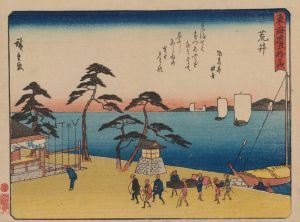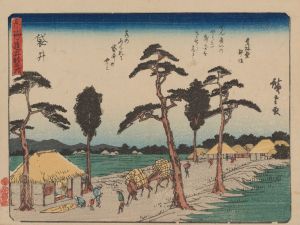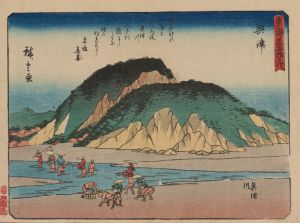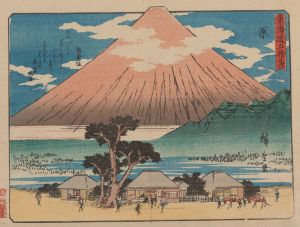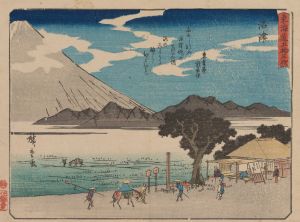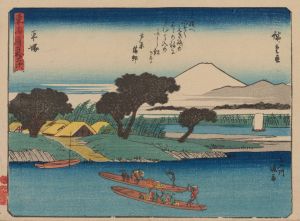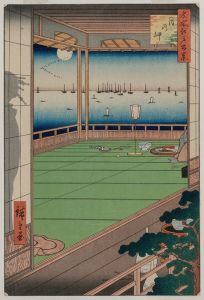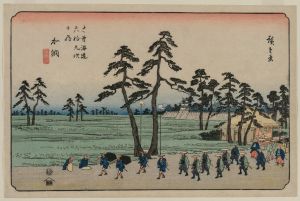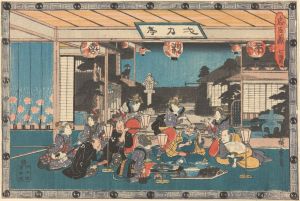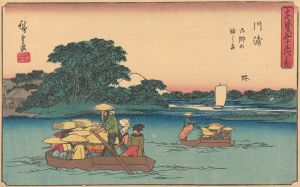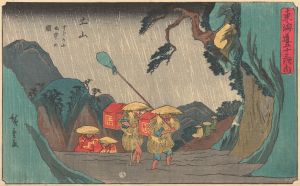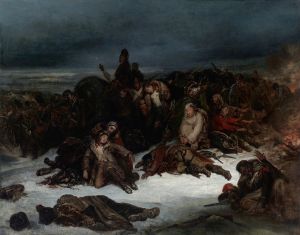
The Fuji River in the Snow
A hand-painted replica of Andō Hiroshige’s masterpiece The Fuji River in the Snow, meticulously crafted by professional artists to capture the true essence of the original. Each piece is created with museum-quality canvas and rare mineral pigments, carefully painted by experienced artists with delicate brushstrokes and rich, layered colors to perfectly recreate the texture of the original artwork. Unlike machine-printed reproductions, this hand-painted version brings the painting to life, infused with the artist’s emotions and skill in every stroke. Whether for personal collection or home decoration, it instantly elevates the artistic atmosphere of any space.
Andō Hiroshige, a renowned Japanese ukiyo-e artist of the Edo period, is celebrated for his exquisite landscape prints and his ability to capture the transient beauty of nature. One of his notable works is "The Fuji River in the Snow," which exemplifies his mastery in depicting serene and atmospheric scenes. This artwork is part of Hiroshige's larger body of work that often features famous landscapes and natural phenomena across Japan.
"The Fuji River in the Snow" is a woodblock print that showcases the Fuji River, one of Japan's major rivers, which flows through the Yamanashi and Shizuoka Prefectures. The river is depicted under a blanket of snow, creating a tranquil and almost ethereal atmosphere. Hiroshige's use of color and composition in this piece highlights his skill in conveying the quiet beauty of a snowy landscape. The print is characterized by its delicate gradations of color and the subtle interplay of light and shadow, which are hallmarks of Hiroshige's style.
Hiroshige's work is often associated with the ukiyo-e genre, which translates to "pictures of the floating world." This genre flourished in Japan from the 17th to the 19th centuries and typically depicted scenes from everyday life, landscapes, and theatrical performances. Hiroshige, along with Katsushika Hokusai, is considered one of the most prominent artists of this genre, particularly known for his landscape prints.
In "The Fuji River in the Snow," Hiroshige employs a composition that draws the viewer's eye along the river's course, framed by snow-covered banks and distant mountains. The use of perspective and the careful placement of elements within the scene create a sense of depth and movement, inviting the viewer to explore the tranquil winter setting. The print captures the essence of a snowy day, with the river flowing gently amidst the stillness of the surrounding landscape.
Hiroshige's ability to evoke emotion through his depiction of nature is evident in this work. The serene and contemplative mood of the print reflects the traditional Japanese appreciation for the beauty of nature and the changing seasons. This appreciation is a recurring theme in Hiroshige's work, as he often sought to capture the fleeting moments of beauty found in the natural world.
"The Fuji River in the Snow" is part of Hiroshige's broader exploration of famous sites and natural wonders across Japan. His work has had a lasting impact on both Japanese and Western art, influencing artists such as Vincent van Gogh and Claude Monet. Hiroshige's prints were among the many Japanese artworks that reached Europe in the late 19th century, contributing to the Japonisme movement and inspiring a new wave of artistic expression.
Overall, "The Fuji River in the Snow" is a testament to Hiroshige's skill as a landscape artist and his ability to convey the serene beauty of Japan's natural scenery. Through his use of color, composition, and perspective, Hiroshige captures the quiet elegance of a snowy day along the Fuji River, inviting viewers to appreciate the harmonious relationship between nature and art.





